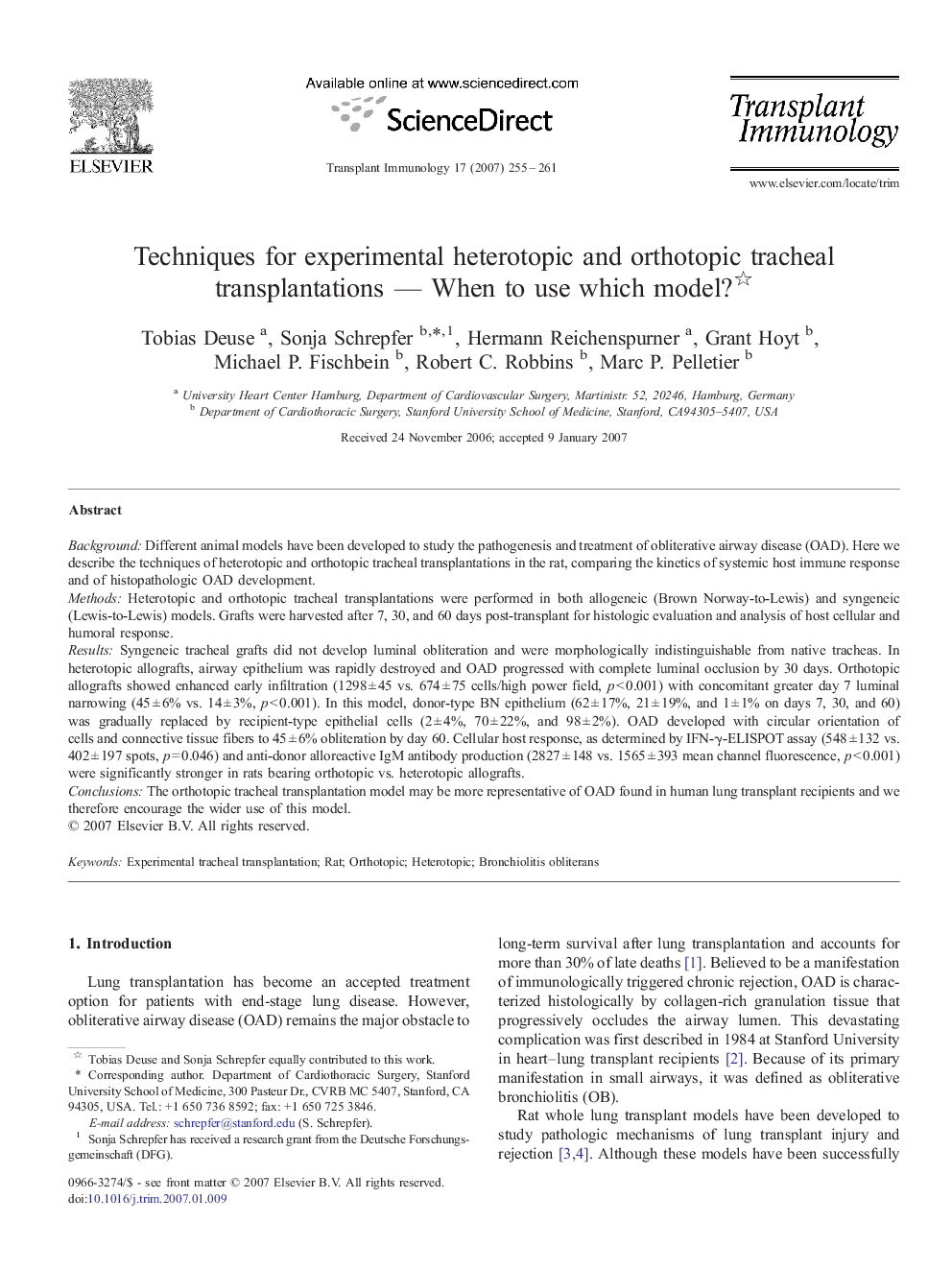| Article ID | Journal | Published Year | Pages | File Type |
|---|---|---|---|---|
| 3392530 | Transplant Immunology | 2007 | 7 Pages |
BackgroundDifferent animal models have been developed to study the pathogenesis and treatment of obliterative airway disease (OAD). Here we describe the techniques of heterotopic and orthotopic tracheal transplantations in the rat, comparing the kinetics of systemic host immune response and of histopathologic OAD development.MethodsHeterotopic and orthotopic tracheal transplantations were performed in both allogeneic (Brown Norway-to-Lewis) and syngeneic (Lewis-to-Lewis) models. Grafts were harvested after 7, 30, and 60 days post-transplant for histologic evaluation and analysis of host cellular and humoral response.ResultsSyngeneic tracheal grafts did not develop luminal obliteration and were morphologically indistinguishable from native tracheas. In heterotopic allografts, airway epithelium was rapidly destroyed and OAD progressed with complete luminal occlusion by 30 days. Orthotopic allografts showed enhanced early infiltration (1298 ± 45 vs. 674 ± 75 cells/high power field, p < 0.001) with concomitant greater day 7 luminal narrowing (45 ± 6% vs. 14 ± 3%, p < 0.001). In this model, donor-type BN epithelium (62 ± 17%, 21 ± 19%, and 1 ± 1% on days 7, 30, and 60) was gradually replaced by recipient-type epithelial cells (2 ± 4%, 70 ± 22%, and 98 ± 2%). OAD developed with circular orientation of cells and connective tissue fibers to 45 ± 6% obliteration by day 60. Cellular host response, as determined by IFN-γ-ELISPOT assay (548 ± 132 vs. 402 ± 197 spots, p = 0.046) and anti-donor alloreactive IgM antibody production (2827 ± 148 vs. 1565 ± 393 mean channel fluorescence, p < 0.001) were significantly stronger in rats bearing orthotopic vs. heterotopic allografts.ConclusionsThe orthotopic tracheal transplantation model may be more representative of OAD found in human lung transplant recipients and we therefore encourage the wider use of this model.
